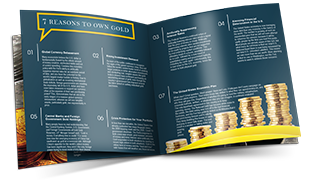Click here to get this article in PDF
“In uncertain times, gold is always certain.”– Esme Shelby on Peaky Blinders (S6.Ep3)
With the economy in decline, a feckless government at the helm, and an uncertain future ahead, people are desperately looking for direction. They want even the slightest clue of what tomorrow will bring so they can be in a better position to protect their wealth.
This has led many people to compare the current economic events with the 2008 financial crisis. Watch the video below to hear what Scottsdale Bullion & Coin Founder Eric Sepanek & Sr. Precious Metals Advisor Steve Rand are saying about the relationship between these two historic economic events.
2008 vs Today: Similarities & Differences
Interest Rates
Interest rates are among the Federal Reserve’s favorite tools for influencing the economy. Before the housing market crumbled in 2008, interest rates were sitting high at just over 5% which gave the Fed plenty of runway. In an attempt to stimulate the weakening economy, interest rates were slashed by 3% between September of ‘07 and April of ‘08.
Unfortunately, today’s market conditions are significantly less favorable. Interest rates were already at painful lows when the economy started to take a turn for the worse. Instead of being able to lower rates to kickstart the economy, the Fed has to move in the opposite direction with painful rate hikes.
Debt
The national debt, which is another important indicator of an economy’s overall health, was in a much better position in 2008 too. Just before the economic collapse, it was hovering around $8 trillion which seemed like a ludicrous amount at the time. However, the government’s penchant for spending continued to spiral out of control. Within the past 14 years, the national debt has nearly quadrupled to a jaw-dropping $30 trillion.

Learn How to Avoid Costly Rookie Mistakes & Invest in Gold Like a Pro!
Get Free Gold Investor Guide
Inflation
Inflation is perhaps the most foundational and accurate measure of the economy’s condition. Sticking with the trend, the inflation rate was actually rather healthy in 2008 compared to today. It was sitting around 3.8% which is just above the Fed’s target annual inflation rate of 2%.
In contrast, we’re currently seeing an inflation rate of 8.5% which doesn’t even reveal the full picture. We get a clearer view of the real state of inflation when including energy, housing, and food costs into the equation. With these factors, the inflation rate jumps to over 18%.
Gold
Another important difference between the 2008 financial crisis and the current economy is the reaction by governments and institutions. When the housing bubble popped, there wasn’t a large-scale shift towards gold and other precious metals. Individual investors certainly shored up their investments with more stable assets, but it didn’t happen on a global scale.
Today, we’re seeing a much more deliberate institutional move towards gold. Central banks around the world are clamoring to increase their gold bullion supplies to stabilize against increasing market volatility and increase their leverage on the reserve currency. In April alone, nearly 20 tons of gold were scooped up by central banks.
Gold’s reaction isn’t always immediate
With market conditions continuing to circle the drain and major institutions making moves towards gold, many investors are wondering why gold prices haven’t gone up with inflation. Although inflation and gold prices are inversely correlated, there’s typically a delay between raging inflation and skyrocketing gold spot prices.
During 2008, gold only gained around 2.8% in value which was good compared to the overall market. The real gains resulting from the colossal financial collapse of the year didn’t come until a few years later though. Over the next four years, gold prices skyrocketed by nearly 80%. The same delayed response can be expected to happen following the current economic meltdown.
Buy Gold and Wait, Don’t Wait to Buy Gold
Central banks, institutions, and retail investors are all increasing their exposure to precious metals as a hedge against inflation. For centuries, gold has proven to preserve wealth even during severe economic downturns. If you’re interested in learning more about the protection offered by gold and silver, get your FREE COPY of our popular Precious Metals Investment Guide today.
